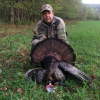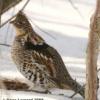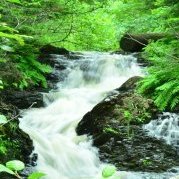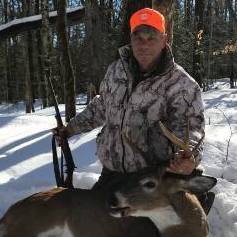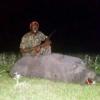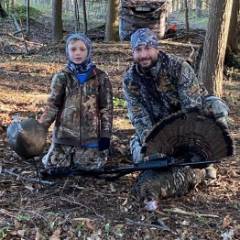Leaderboard
Popular Content
Showing content with the highest reputation on 02/26/16 in all areas
-
BAWAN59 oughta' stuff that barrr.........................if'n he has room in his basement.6 points
-
I like the outdoors, but not a chance I want to live like those folks. I am too spoiled. I like a nice restaurant too on occasion and a furnace that kicks on when its supposed too.5 points
-
Heck, Doe...you should move up there right now, with your wife ( SallyWhacker) and your kids ( WeenieWhacker and TallyWhacker)....5 points
-
No matter how you look at it, you can't deny the anti hunters effectively stopped hunting there. This stopped all of the revenue hunters brought into the area. Now they are going to kill 200 lions and gain nothing by doing it. The anti hunters consider this a win. Not because it saved any lions, but because it stopped hunters from killing them. The fact that lions will still be killed is immaterial to the anti hunter.5 points
-
Grandma took us to El Ranchita, carne asada and a couple cold Buds. If you need me I'll be in the bathroom5 points
-
Mama and I went to Yelling Goat Mexican pizza . Flank steak , cilantro , corn , salsa cheese and green chilies5 points
-
Well..., technically it's not mine any more. Tomorrow is my sisters B-day so I gotta wrap this sucker up for her as promised so I don't have to actually BUY her anything,lol I was just happy the bulb lit up when I hit the switch. I was running out of time to get this done.4 points
-
Sorry this is long.....might answer some more questions.....Source is a Nat Geo article Culling to Conserve: A Hard Truth for Lion Conservation Posted by Michael Schwartz in Cat Watch on February 25, 2016 People that don’t live in Africa tend to learn about wildlife conservation in easy to understand terminology. But safeguarding animal species like lions is often more complex than mainstream media sound bites would have their audiences believe. The National Post recently reported that management from Zimbabwe’s Bubye Valley Conservancy was considering a controversial move to cull upwards of 200 lions out of a rough population of 500 in order to ensure the reserve’s wildlife biodiversity. It was also reported that since the growing calls to end trophy hunting, due in large part to the killing of Cecil the lion in Zimbabwe’s Hwange National Park last year, conservancies like Bubye are no longer seeing the funding necessary to adequately cover conservation costs, which includes fence maintenance, financing local schools and health clinics, and providing meat to local people. Given the many challenges conservationists face in Africa, coupled with culling and trophy hunting being such contentious issues, I decided to reach out to Dr. Byron du Preez, a Bubye Valley Conservancy project leader and member of the Wildlife Conservation Research Unit (WildCRU), in the Department of Zoology at Oxford University. Specifically, I was hoping for clearer answers regarding the potential paradox that increasing calls for hunting bans in Africa have on existing lion populations, and how that may be playing out within the recent culling conundrum. Fortunately, Du Preez went one step further by clearing up what was initially reported, clarifying the proposed cull, explaining how culling works, and elaborating on the dangers of promoting single species management. Clarification on the Proposed Lion Cull I am an independent scientist working on the Bubye Valley Conservancy, focused on lion ecology, which actually means just about every aspect of the ecosystem, such is the influence that lions have. I am neither pro- nor anti-hunting. I simply focus on practical conservation solutions that actually work in the real world. We are hopeful that we will be able to translocate some lions, although all previous attempts to translocate lions out of the Bubye Valley Conservancy have been derailed by factors entirely out of our control. However, if the species was in as much trouble as the sensationalist reports like to focus on, one would think that it would be a lot easier to find new homes for these magnificent animals than it actually is. ‘There is basically no more space left in Africa for a new viable population of lions.’ The fact remains that habitat destruction is their biggest enemy, and there is basically no more space left in Africa for a new viable population of lions. The Science of Culling A cull is not a once-off fix (neither is translocation, nor contraception), but would be more of an ongoing management operation conducted on an annual basis. When given adequate space, resources, and protection, lion populations can explode, such as they have done on the Bubye Valley Conservancy. Reducing numbers to alleviate overpopulation pressure does nothing to permanently solve the problem, nor halts the species’ breeding potential; [it] only slows it down for a relatively short time until their population growth returns to the exponential phase once again. Culling is a management tool that may be used for many species. That includes: elephants, lions, kangaroos, and deer, basically animals that have very little natural control mechanisms other than disease and starvation, and that are now bounded by human settlements and live in smaller areas than they did historically. As responsible wildlife managers who have a whole ecosystem full of animals to conserve (not just lions), we have therefore discussed culling as an option for controlling the lion population, but have agreed that, for now, this is not necessary just yet and we will continue to try and translocate these animals until our hand is forced. As already mentioned, there is very little space left in Africa that can have lions but doesn’t already. Also, where lions do occur, especially in parks and private wildlife areas, they often exist at higher densities than they ever did historically. This is mainly due to augmented surface water supply resulting in greater numbers of non-migratory prey that now no longer limit lion nutrition and energy availability, allowing the lion population to rapidly expand. For example, successful hunting to feed cubs all the way through to adulthood and independence is one of the greatest stresses for a lion, and often results in dead cubs and reduced population growth. In turn, a high density of lions can severely reduce the density of their prey, ultimately leading to the death of the lions via disease and starvation—far more horrific than humane culling operations conducted by professionals. The Dangers of Single Species Management Lions are the apex predator wherever they occur, and as such exert a level of top-down control on the rest of the ecosystem. Lions prey on a wide variety of species, and we are starting to see declines in even the more common and robust prey such as zebra and wildebeest—not to mention the more sensitive species such as sable, kudu, nyala, warthog, and even buffalo and giraffe. Apart from their prey, lions are aggressively competitive and will go out of their way to kill any leopard, cheetah, wild dog, or hyena that they encounter, and have caused major declines in these species, not just on the Bubye Valley Conservancy, but elsewhere in Africa where lion densities are high. According to the International Union for the Conservation of Nature (IUCN), cheetah are listed as vulnerable, and wild dogs are endangered. It is easy to simply focus on the number of lions remaining in Africa that has fallen steeply over the last century from ~100,000 to ~20,000 today, but which is directly linked to the reduction in available habitat. Simply focusing on increasing the abundance of one species at the cost of another cannot be considered a conservation success—assuming that holistic conservation for the benefit of the entire ecosystem is the end goal—no matter how iconic that species is. Luckily, lions kill lions, resulting in more lion mortality than any other species—including man on the Bubye Valley Conservancy—and in an ideal world the lion population would level off at a putative carrying capacity where lions control their own numbers (deaths from conflict equal or exceed new births). However, it is possible and probable (man-made water points increase the carrying capacity of — and therefore also the competition and conflict between — all wildlife species) that this would still be at the cost of certain other sensitive species. Ecosystem stability is related to size (and conversely ecosystem sensitivity is inversely related to size) and smaller areas need to control their lion numbers a lot more carefully than large areas such as the Bubye Valley Conservancy, which is over 3,000 square kilometres [1,160 square miles]. In fact, small reserves in South Africa alone culled over 200 lions in total between 2010 and 2012 ,according to the 2013 report from the Lion Management Forum workshop. Understanding Carrying Capacity The Bubye Valley Conservancy does not rely on trophy hunting to manage the lion population. I will discuss the economics of hunting in brief. The most recent and robust lion population survey data calculate a current lion population on the Bubye Valley Conservancy of between 503 and 552 lions (it is impossible to get a 100 percent accurate count on the exact lion number — which also changes daily with births and deaths). Carrying capacity is an extremely fluid concept, and changes monthly, seasonally, and annually depending on all sorts of factors including rainfall, disease (of both predator and prey), and economics. It is estimated that 500 lions eat more than U.S. $2.4 million each year (the meat value used is a very conservative $3 per kg – compare that to the price of steak in a supermarket, and then remember that the Bubye Valley Conservancy used to be a cattle-ranching area, and if wildlife becomes unviable, then there is no reason not convert it back to a cattle ranching area once again). To give the question of carrying capacity a fair, if necessarily vague, answer, I would personally estimate that the upper carrying capacity of lions on the Bubye Valley Conservancy would be around 500 animals—assuming that they are allowed to be hunted and therefore generate the revenue to offset the cost of their predation. Remember, lion numbers can get out of hand. And if there was no predation, then thousands upon thousands of zebra and wildebeest and impala would need to be culled to prevent them from over grazing the habitat, leading to soil erosion, starvation, and disease. The ecosystem is a very complex machine and whether anyone likes it or not, humans have intervened with cities, roads, dams, pumped water, fences, and livestock. The only way to mitigate that intervention is by further, more focused, and carefully considered intervention, for the sake of the entire ecosystem. It is important to bear in mind that the wildlife here, and in the majority of other wildlife areas in Africa (hunting areas exceed the total area conserved by Africa’s national parks by more than 20 percent), does not exist as our, or anyone else’s, luxury. The Bubye Valley Conservancy is a privately owned wildlife area, or to put it another way, it is a business. The fact that it is a well-run business is the reason why it is one of the greatest conservation successes in Africa, converting from cattle to wildlife in 1994 (only 22 years ago) and now hosting Zimbabwe’s largest contiguous lion population at one of the highest densities in Africa, as well as the third largest black rhino population in the world (after Kruger and Etosha). This is only possible because it is a business, and is self-sufficient in generating the funds to maintain fences, roads, pay staff, manage the wildlife, pump water, and support the surrounding communities—all extremely necessary factors involved in keeping wildlife alive in Africa. Michael Schwartz is a freelance journalist and African wildlife conservation researcher. He is also an honorary member of the Jane Goodall Institute and International Institute for Environment and Development’s Uganda Poverty Conservation Learning Group.4 points
-
If it were not for my family, who would or could not do it. I'd be living it now. There is no doubt in my mind I could do it, or would die trying. But the life I have now isn't so bad either.4 points
-
3 points
-
Big cats are incredibly prolific on their own give a prey source and room to expand. Its the room that is the issue for much of Africa's wildlife.3 points
-
Turned in to three, neighbor stopped by on his new quad. By law we are required to drink three beers and look at it3 points
-
Thanks again everyone! She LOVED it Paula, but now she's expecting a chandelier next year,lol Two of her friends have already placed their orders for their husbands and boyfriends. I might have to start BUYING antlers soon at this rate!3 points
-
Usually people on this site complain other people post things that have nothing to do with hunting. They demand these posts be censored, or at least moved to the political forum. This guy posts nothing but hunting posts and people still protest. I don't get the animosity and hostility here.3 points
-
And just how do you know the mental make-up of this guy? What qualifies you to pass judgment?3 points
-
Roll call, who's got their tap's in and cooking. I will be cooking outside tomorrow over the fire, I have been looking forward to this since we ran out of last years Syrup a month ago. It should be a good season but who knows, certainly is off to a good start! I'll snap some sap pic's tomorrow.2 points
-
If a taxidermist tells you he will get it back to you in a couple months... look for a different taxidermist! Most likely he isn't professionally tanning the hide. I have never gotten a head back in less than 8 months. Some taxidermists might be quicker if not busy... but my experience tells me if they aren't busy... they probably aren't the best choice.2 points
-
Getting into reloading doesn't have to be expensive. Everything in these pictures cost me around $250. Its bare bones and basic but it gets the job done. Sent from my SM-G920T using Tapatalk2 points
-
2 points
-
My Alaska trips were DIY and unguided, so I've spent a couple of weeks (several times) living in the wilderness in small tents with minimal creature comforts. It was a wonderful experience, but it sure was nice to get back into town and get a hot shower, a soft bed, and a restaurant meal. It was also nice to go to the can and not have to carry your rifle in case you are interrupted by a grizzly bear.2 points
-
2 points
-
If there was a shelter waiting and I brought in canned goods and some other supplies maybe but just getting dropped in? I'd be dead in a week. Read Into the Wild, it's a great book. It demonstrates how you can think you're prepared for something like that but quickly realize you aren't2 points
-
2 points
-
This is how I'll defend our home I'll even hook up treadmills so they power the house ????2 points
-
there are much nicer, more comfortable ways to live if you just want to be a hermit than how they live.2 points
-
could we just keep this to anti-hunters? Everything in the world isn't decided on liberals or non-liberals.2 points
-
I have been to Alaska 7 times and I LOVE it. It's a great place to go hunting and fishing. I wish I could afford to go back every year. But LIVE there..??... NOPE !! Six months de snow fly, and six months de BLACK fly !2 points
-
I can't say that I'm an avid shed hunter, but I dabble a bit. I'm horrible at it! I have found many full skulls with antlers during hunting season, but I have only found one shed antler in my life... and it was a 3" spike!! Go figure! I've pulled more antlers off late season buck's head's than I've found in the woods... finding shed antlers is not one of my talents...2 points
-
I like all those kind of shows the boonies, Alaska the last frontiers.Yukon men,mountain men,life below zero all great shows I'm not sure I could live long term like they do I affraid I'm a little to used to some amenities but I would love to try it for a month or so. Sent from my VS980 4G using Tapatalk2 points
-
In the early 80's I took a summer leave and spent 3 months in the Colorado San Juan mountains as a volunteer caretaker keeping an eye on a ghost town. Many days would go by without seeing a soul. Barely any AM/FM radio, shortwave and my weekly pick up of gas, grub and reading material my only connection to the outside world. I have two daughters and think fondly of the deep absolute quiet there.2 points
-
Otto, sounds like your happy that the government has all of your phone conversations and computer communications. Why? I don't want the government knowing anything I'm communicating. It's none of their business.2 points
-
Originally, archery was implemented to be a primitive weapon season. So was muzzle loader season. The idea was to allow people to hunt deer in seasons other than firearm season, if they wanted to take the challenge to do it with a primitive weapon. There was a certain sense of accomplishment when succeeding at it. Sort of like fly fishing vs bait casting. Today we seem to be pushing modern technology into these primitive seasons. The more we do, the less of a primitive weapon challenge exists. Actually, the less of a need for a separate season exists. Sometimes I fear these archery and ML seasons may become so effective, when the anti gun folks really push to ban all firearms, they'll be able to point to the archery season that allows all types of technology and say they aren't preventing anyone from hunting, just preventing doing it with a firearm. Does loving to hunt require putting meat in the freezer? Does one have to kill an animal to enjoy the hunting? Seems to me getting meat commercially is less expensive than hunting it on a price per pound basis. I'm not knocking anyone who hunts for meat. Just saying we need to be aware of how much "sport" is removed from the process when we modify the rules.2 points
-
2 points
-
2 points
-
War and hunting both require skill, LUCK, every advantage you can get, LUCK, and a clean kill. When NY opened up small game hunting to air rifles/pistols it changed the make up of people who hunt on LI I saw more dads and sons with air rifles than I ever did with shotguns.2 points
-
You deff can ..know a guy who lives in Maryland....has a nys lifetime license since he was young, and comes back to hunt each year. Sent from my XT1254 using Tapatalk2 points
-
Gotta see what the wife says when she gets home from her Moms house.We have 6 and another wouldn't bother me.Our oldest cat is going to be 22 and youngest is 2 all declawed2 points
-
War and hunting are two very different things. In war, you want every advantage. Hunting is more a test of your skill.2 points
-
2 points
-
2 points
-
1 point
-
Thanks for the responses guys. Guess I'll continue to sit in the same spot as long as they continue to commit suicide by struttin in front of me. Zoltan1 point
-
So would you would have no problem with the government showing up at your house, unannounced and just taking a walk through ? Or randomly pulling you over and going through your car??? As long as you have "nothing to hide"??1 point
-
Ive seen tracks in a spot i deer hunt up that way. Been meanin to get up there and check it out. Just gettin into yotes myself though so its possible it was just a dog of some hiker. Headin up either tonight or sat night for a night hike to see what i see1 point
-
They are early this year, and I am pumped. Last year we had some stay over and hatch chicks out back. This year I hope they repeat, I love sitting on my porch and listening/watching them do their dance.1 point
-
Not yet stones. Hopefully we get a little warm up this weekend and I'm gonna give it a shot and see what I come up with. I just threw 2 hairless skins in a bucket the other day to re-hydrate the rawhide. If it turns out the way I have planned, that would be great. If it doesn't, then I guess the pooch will have a new chew toy.1 point
-
1 point
-
When there are plenty of food available, animals tend to breed like rabbits. If not controlled, the food source will quickly deplete and a massive famine will plague the the predators and you'll see a massive cycle until the food source recovers, but the lions may or may not recover from such a shock in the ecosystem. A quick search showed this. http://www.defenders.org/african-lion/basic-facts A lioness can produce as many as 12 pups a year, and the first batch of 4 would be ready to hunt after 11 months. With those numbers, I would say from 300 to 500 is entirely possible within a year. X-Calibur Lighting Systems http://facebook.com/XCaliburLightingSystems1 point
-
A few people use handguns to hunt deer and bear as well, but I don't see a problem with them. I don't know many that hunts with an airgun either, but it has done more good to the sport in the last decade than any other technological advancement for hunting. Banning or objecting to the use of an implement for game solely based on the fear it will take over a special season does our sport no good. I do believe a separate discussion of whether an implement like this belongs in a special season or not is a good one, but should not be combined into a single thread. X-Calibur Lighting Systems http://facebook.com/XCaliburLightingSystems1 point
-
If Dom's fist wife won't take the cat, maybe his second, or third would? Good luck with the felines buddy! X-Calibur Lighting Systems http://facebook.com/XCaliburLightingSystems1 point

